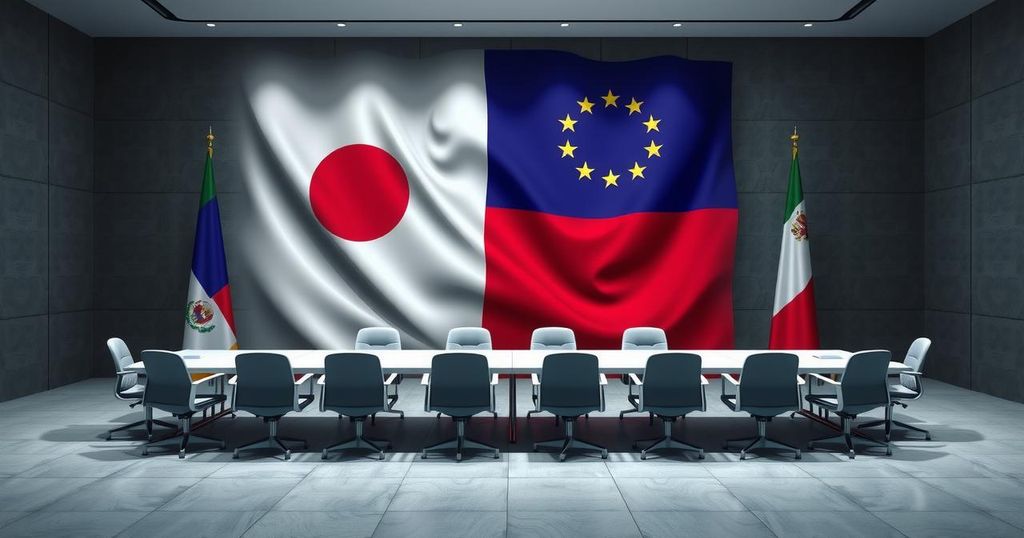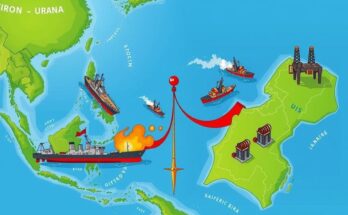The display of an incorrect map at an IBC in Suriname showing Guyana’s New River Triangle as part of Suriname has sparked outrage from the Guyanese government and various organizations. The incident highlights concerns over diplomatic representation and territorial sovereignty. Strong condemnation was expressed regarding the failure to object to the inaccurate map, which contradicts established international agreements defining Guyana’s borders.
Recent backlash has emerged regarding the display of an inaccurate map at an International Business Conference (IBC) in Paramaribo, Suriname. The map in question depicted Guyana’s New River Triangle as part of Suriname, prompting condemnation from Guyana’s Ministry of Foreign Affairs, Foreign Secretary, Shadow Minister of Foreign Affairs, and various business associations. Attendees reported that the incorrect map was not only distributed but also shown during a governmental presentation without significant objection from the audience.
Guyana’s Ministry of Foreign Affairs issued a statement asserting that the government had not been consulted about the map and would have objected had it been involved in the process. The New River Triangle is recognized as part of Guyana’s territory, based on a legally binding agreement from 1936 that defined the boundaries between British Guiana and Suriname. This agreement is further supported by international recognition of Guyana’s territorial rights.
Shadow Minister Amanza Walton Desir criticized the incident, suggesting it signifies a failure in the Guyanese government’s diplomatic efforts, particularly following a separate matter involving an international pageant where a non-Guyanese delegate misrepresented ‘Guyana Esequiba.’ She called for accountability regarding the appointment of ambassadors and the overall quality of Guyana’s international representation.
Foreign Secretary Robert Persaud underscored the importance of understanding and defending Guyana’s territorial limits, reiterating that the New River Triangle is an indivisible part of the nation as established by international processes. He stated that the Joint Border Commission’s role is strictly advisory concerning border resolutions rather than altering territorial demarcations.
Various entities, including the Georgetown Chamber of Commerce and Industry (GCCI) and the Guyana Manufacturing and Services Association (GMSA), also expressed disapproval of the inaccurate maps used during the conference. They emphasized that silence in the face of such representations could be construed as endorsement, urging all involved business organizations to stand united against actions undermining Guyana’s sovereignty.
Dr. Vishnu Doerga, Chair of Action Invest Caribbean Incorporated (AICI), acknowledged that both countries have differing educational narratives regarding their territorial maps and stressed the need for respect for the border commission tasked with resolving these issues. Meanwhile, Rahul Lildhar, CEO of the Suriname Guyana Chamber of Commerce (SGCC), clarified that his organization had no part in the controversial presentation and expressed a desire for transparency from both governments concerning border commission updates.
The recent display of an erroneous map at a conference in Suriname has provoked strong reactions from Guyanese officials and organizations, condemning the misrepresentation of territorial boundaries. The New River Triangle’s status as Guyanese territory is rooted in international agreements, thus necessitating clear diplomatic representation and active defense of national sovereignty. All parties involved are called to maintain vigilance to prevent future inaccuracies in diplomatic engagements.
Original Source: www.stabroeknews.com




